What's New
Displaying results 3891 - 3900 of 4052
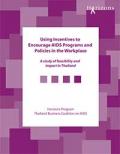
Resource | Publications,
A recently completed Horizons study in Thailand examined the question of how to encourage the private sector to become actively involved in developing and improving workplace HIV/AIDS programs. Researchers investigated the role of incentives in encouraging companies to adopt workplace policies and programs that address stigma and discrimination and respond to the needs of workers for information and services. The research was conducted in partnership with American International Assurance (AIA), the Thailand Business Coalition on AIDS (TBCA), and AusAID, the overseas development agency of the Australian government.
The investigators explored the process and outcomes of offering incentives to encourage companies to improve their workplace HIV/AIDS policies and programs. They hypothesized that these incentives would motivate companies to introduce or improve their policies and activities, which in turn would result in improvements in employees’ knowledge and behaviors.
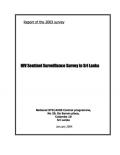
Resource | Publications,
The main objective of the sentinel HIV sero-surveillance is to provide repeated measures of HIV prevalence in selected population groups in selected geographical sites to monitor levels and trends over time. Data generated by the sentinel sero-surveillance is used for HIV estimates, programme planning, and advocacy purposes.
This report summarizes the methods and results of the Sri Lankan HIV sentinel serosurveillance survey conducted in the year 2003.
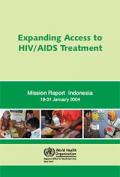
Resource | Publications,
Recently, Indonesia has adopted an ambitious target of providing antiretroviral treatment (ART) to at least 10 000 people by the end of 2005. As of January 2004, of an estimated 15 000 people who were in need of ART, only 1300 persons were receiving the treatment. The intermediate target for 2005 is in line with the global WHO and UNAIDS "3 by 5" initiative. The initiative aims to provide three million people in developing countries (out of six million in need globally) access to ART by the end of 2005. The ultimate goal of the initiative is to provide universal access.
From 19 to 31 January 2004, a team of WHO experts visited Indonesia to assess the country's readiness for rapid scale-up of ART, to identify the technical support that will be needed, and to recommend urgent action towards achieving the time-bound target.
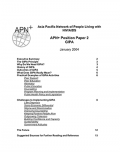
Resource | Publications,
The Paris AIDS Summit Declaration of 1994 acknowledged the central role of people living with HIV in AIDS education and care, and in the design and implementation of policies and programs towards a successful response to HIV/AIDS.
GIPA means the Greater Involvement of People with HIV/AIDS, and derives from a principle embedded in the Paris AIDS Summit Declaration of 1994. At this summit, leaders of 42 nations met together to determine how they could effectively respond to the AIDS crisis.
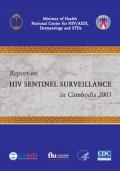
Resource | Publications,
In Cambodia, sentinel surveillance data are used for estimating national HIV prevalence and modeling trends in HIV and AIDS incidence and mortality. In 2003, Cambodia conducted its ninth round of HIV sentinel surveillance (HSS) in 22 of its 24 provinces and municipalities. Sentinel groups surveyed were brothel-based female sex workers (FSW), female beer promoters and women working in karaoke establishments as a proxy for informal female sex workers (IFSW), policemen, and pregnant women attending antenatal care (ANC) clinics.
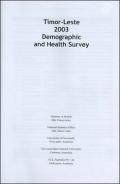
Resource | Publications,
Timor-Leste 2003 Demographic and Health Survey is the first comprehensive assessment of the demographic, health and nutrition status of the population of Timor-Leste since independence. The survey was similar to the surveys conducted in other countries as part of the worldwide program of Demographic and Healh Surveys. It was designed to collect data on fertility, family planning, maternal and child health and nutritional status of adults and children.
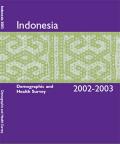
Resource | Publications,
The 2002-2003 Indonesia Demographic and Health Survey (IDHS) is a nationally representative survey of 29,483 ever-married women age 15-49 and 8,310 currently married men age 15- 54. The main purpose of the 2002-2003 IDHS is to provide policymakers and program managers with detailed information on fertility, family planning, childhood and adult mortality, maternal and child health, and knowledge of and attitudes related to HIV/AIDS and other sexually transmitted diseases.
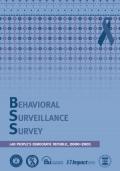
Resource | Publications,
The Behavioral Surveillance Survey (BSS) was conducted in 2000-2001 by the NCCA in partnership with Family Health International (FHI), the Office of the Population Technical Assistance Team (OPTA), and five Provincial Committees for the Control of AIDS (PCCA) including Luang Prabang, Vientiane Municipality, Khammuane, Savannakhet, and Champasak. It is an integral part of the second generation HIV surveillance system. Using standardized and country specific indicators, the BSS had two primary objectives: 1) to determine HIV/AIDS related behaviors among mobile and migratory populations in Lao PDR and measure behavioral changes over time, and 2) to systematically measure HIV risk behavioral trends among sub-populations who may be vulnerable to HIV.
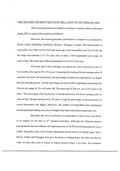
Resource | Publications,
The second generation surveillance was done in various cities in Myanmar during 2003 as a part of the sentinel surveillance. However, the second generation surveillance on female was conducted in Dawei, Lashio, Mandalay, Meikhtila, Monywa, Taunggyi, Yangon.
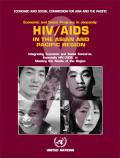
Resource | Publications,
In the two decades since HIV/AIDS was first discovered, it has gone from being an enigmatic, uncommon disease to a less mysterious, rampant pandemic. No region has been spared its impact. Few are unaware of its presence.
The spectre of HIV/AIDS is already here, casting a dark shadow over the Asian and Pacific region. The epidemic is a clear and present danger. It threatens to unravel achievements gained. It also threatens to stall future progress.
Given the many ways in which HIV/AIDS proliferates and affects our societies, the solutions too need a multi-pronged approach. The region’s experience in marrying social and economic policies is vital to tackling the pandemic in all its dimensions.





